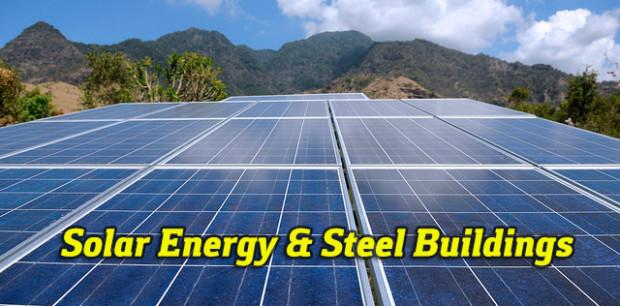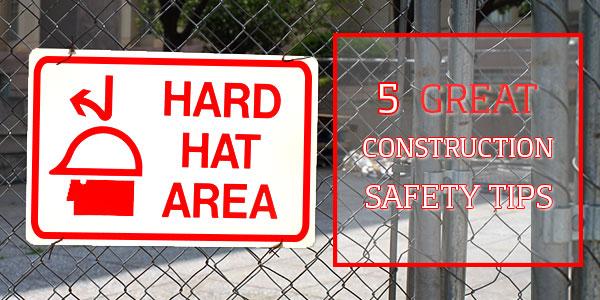Solar Energy and Steel Buildings

If you watch TV or listen to the radio long enough, or even pay attention to politics, chances are you’re going to hear about renewable energy. It’s clean, affordable, and unlimited. More and more, people are looking for ways to make the world a better place to live. Americans put an emphasis on ‘building green’ as they say, and it’s caught on in the construction industry. This push is coming at a great time in our history. Do you know how much American businesses, alone, spend on energy? At an estimated cost of $38 billion a year, lighting represents the largest source of electricity consumption in U.S. commercial buildings, according to the U.S. Department of Energy. That doesn’t even account for homes or some residential steel buildings with lighting. Now, a tremendous growth in the U.S. solar power industry is helping to pave a way for a more sustainable energy future.
Can solar energy work on steel buildings? Of course! Armstrong Steel customers who want solar power to be a part of their building just need to speak with a project manager during the design phase of their building development. During the design phase, when loads are established prior to engineering drawings, its important to communicate with your project manager your intention to add alternate energy sources. This will impact the weight and design of the structure significantly. So exactly what type of solar energy system is right for you?
Photovoltaic System
 A photovoltaic system, also called a solar PV system or solar array, is a solar power system designed to convert sunlight into electricity, usually with the help of solar panels. In fact, the process of converting light into voltage or electricity is called the ‘photovoltaic effect.’ This is the most popular system people use on their steel building. Most rooftop solar panels are connected into a buildings electrical grid, and don’t typically use battery storage.
A photovoltaic system, also called a solar PV system or solar array, is a solar power system designed to convert sunlight into electricity, usually with the help of solar panels. In fact, the process of converting light into voltage or electricity is called the ‘photovoltaic effect.’ This is the most popular system people use on their steel building. Most rooftop solar panels are connected into a buildings electrical grid, and don’t typically use battery storage.
It’s not a complicated process. These PV systems generate power during the day and provide energy to the grid. The building in turn, uses that energy from the grid. Building owners can even push power back into the electrical grid, which generates energy credits. These solar power systems can also add property value to your steel building without adding any tax liability and they also reduce CO2 and pollution emissions that generally come from electrical plants. The U.S. Environmental Protection Agency works with the federal government and certain states to offer renewable energy production incentives, rebates and tax credits. Hybrid solar shingles are also becoming available, and are an aesthetically pleasing, albeit an expensive alternative to panels.
Solar Water Heating System
Solar water-heating systems don’t generate electricity. First you’ll need a solar collector, which is generally mounted on the roof. The collector catches heat from the sun and transfers the heat to the liquid. Remember learning about the ‘greenhouse effect’ in high school? It’s the same process at work here. Solar radiation is trapped in the collector and converted to heat, and warms your water. A solar water heating system will heat all the water in your building used for washing, cooking and cleaning. These systems require a little more set up. Some need a high  efficiency pump, while some involve vacuum and heat exchange equipment. Research from the U.S. Department of Energy states that a solar water heater will cost more to purchase and install than a conventional heating system, but can save you an estimated 50% on your heating bill. Of course, the numbers are different for everyone, depending on water consumption and other small factors.
efficiency pump, while some involve vacuum and heat exchange equipment. Research from the U.S. Department of Energy states that a solar water heater will cost more to purchase and install than a conventional heating system, but can save you an estimated 50% on your heating bill. Of course, the numbers are different for everyone, depending on water consumption and other small factors.
Solar Air Heating Systems
 Solar Air Heating Systems are another thermal solution that converts the sun’s energy into heat. Like the solar water heating system, this requires a collector of some sort, typically built into the roof or walls of a steel building during the initial erection process. The other main elements needed are some insulated piping and a hot water storage tank. The system uses energy from the sun, warms the air, and then works in conjunction with HVAC equipment inside your steel building for even circulation.
Solar Air Heating Systems are another thermal solution that converts the sun’s energy into heat. Like the solar water heating system, this requires a collector of some sort, typically built into the roof or walls of a steel building during the initial erection process. The other main elements needed are some insulated piping and a hot water storage tank. The system uses energy from the sun, warms the air, and then works in conjunction with HVAC equipment inside your steel building for even circulation.
As you work with a project manager to design your steel building, find out if a solar energy system is right for you. Get started by pricing a steel building online now!
Photo courtesy: Bart Speelman, Living Off Grid, gmourits, US Army Environmental Command
« 5 Black Friday Survival Tips for Small Business Owners
Is A Steel Building On Your Christmas List? »
Popular Posts

Have you ever thought about your brand image? If not, now is the time to start thinking about it. Every company has a brand image, whether you know it or not. Your brand image is your reputation and a healthy reputation is paramount to success. If you haven’t thought too much on your brand image, it’s… …

According to the United States Department of Labor Occupational Safety and Health Administration (OSHA), nearly 6.5 million people work at approximately 252,000 construction sites across the nation on any given day. These workers build our roads, houses and buildings and maintain the world’s infrastructure. At Armstrong Steel, we have joined forces with some of the… …

